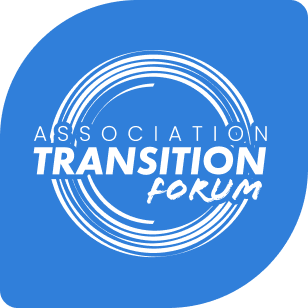3 Questions to IEA Chief Energy Economist Tim Gould
1. You recently published the IEA’s Roadmap to Net Zero by 2050. Could you remind us its main points, especially in terms of investment and innovation opportunities? And how does it reflect the evolution of your institution?
While many governments and companies have pledged to reach net zero emissions by mid-century or soon after, the changes required to reach those goals are poorly understood. That is the reason we came up with our landmark Roadmap to Net Zero by 2050: to show governments, industry, investors and citizens what would need to happen across the global energy sector – and what the implications would be more broadly. The main takeaway from the Net Zero Roadmap is that there is a pathway to put the world on a sustainable energy and climate footing in line with limiting the global temperature rise to 1.5 degrees – but it is a narrow pathway and requires immediate and ambitious actions worldwide. It will require a complete transformation of our energy systems, with massive electrification of sectors such as transport and industry, and with almost all of that power being generated through renewables and other low-carbon sources.
Most of the reductions in emissions between now and 2030 come from technologies readily available today. But by 2050, almost half the reductions come from technologies that are currently under development, especially in fields such as energy storage, hydrogen and carbon capture. This demands that governments quickly increase and reprioritise their spending on research and development. The Roadmap assumes that total energy investment must rise to USD 5 trillion a year by 2030 from just under USD 2 trillion now.
Ever since its founding in 1974 to confront severe disruptions in world oil markets, the IEA’s mission has evolved along with the challenges facing its members. Over the years, the IEA has widened its scope to cover all forms of energy, welcomed major emerging economies into the IEA family, and increasingly focused on the need to transform our energy systems to reduce greenhouse gas emissions and avoid the worst effects of climate change. The IEA is determined to lead the global clean energy transitions, and make sure we can address the challenge of climate change with sustainable, resilient and secure energy systems. The Net Zero Roadmap clearly shows that.
2. What impact do you expect this roadmap will have on actors, policy makers and manufacturers?
Achieving a net zero energy system by 2050 is a race against time, a race that no one wins unless everyone gets over the line. And it will have implications – and opportunities – for everyone.
We have already seen a lot of different actors in the energy sector and beyond – policy makers, companies, investors, NGOs and more – responding to the findings and recommendations of our Roadmap, and we have been very encouraged on the whole. In particular, we have seen a great deal of interest from different countries in working together with us on their own national roadmaps to net zero by 2050.
The Roadmap was designed to inform the conversation around the actions needed to achieve energy and climate goals ahead of the COP26 Climate Change Conference in Glasgow in November. I think it has clearly helped focus that conversation. And the IEA is continuing to work to support the UK government’s COP26 Presidency with the aim of making the outcome as successful as possible.
3. The Transition Forum brings together an international community of key players from different sectors and industries committed to a real low-carbon future. What main message you would like to convey to them?
To reach our climate goals, we have to go from a fossil-fuel dominated energy world today to one dominated by clean energy in 2050. It is worrying to see that emissions in 2021 are already rebounding to pre-pandemic levels, and are projected to continue to increase. But there are positive signals that we can make the shifts needed to reach net zero: record renewable capacity expansion, EV sales continuing to increase, and political commitments to achieving net zero emissions – unimaginable a few years ago in many places. The major milestones for a net zero energy system by 2050 underscore the scale and speed of change that we need. Today’s positive technology and policy signals indicate that reaching these ambitious goals is difficult, but possible.
We have three major tasks ahead of us. First, in the next ten years, we have to make the most of the clean energy technology options that are already available. Second, we have to push the button of innovation because there are technologies which are under development today that are critical to decarbonize our energy system. Third, we have to reduce fossil fuel use worldwide. Policymakers must send an “unmistakable signal” to businesses that investments in clean-energy technologies — not fossil fuels — will be the winners.
And let’s not forget that different countries are coming at this challenge from very different places. Many emerging and developing economies are still expanding their energy systems to provide modern energy services to more of their citizens – services we tend to take for granted in advanced economies. Emerging and developing economies also face greater difficulties in securing the investments they need for clean energy projects. These are critical issues that need to be taken into account as governments work together to build a clean energy future.
Finally, tackling emissions from existing infrastructure will be critical. It is important to build new infrastructure that is as sustainable and efficient as possible, but we also need to focus on the emissions that are “locked in” to existing systems. That means addressing emissions from existing power plants, factories, ships and other capital-intensive infrastructure already in use.

